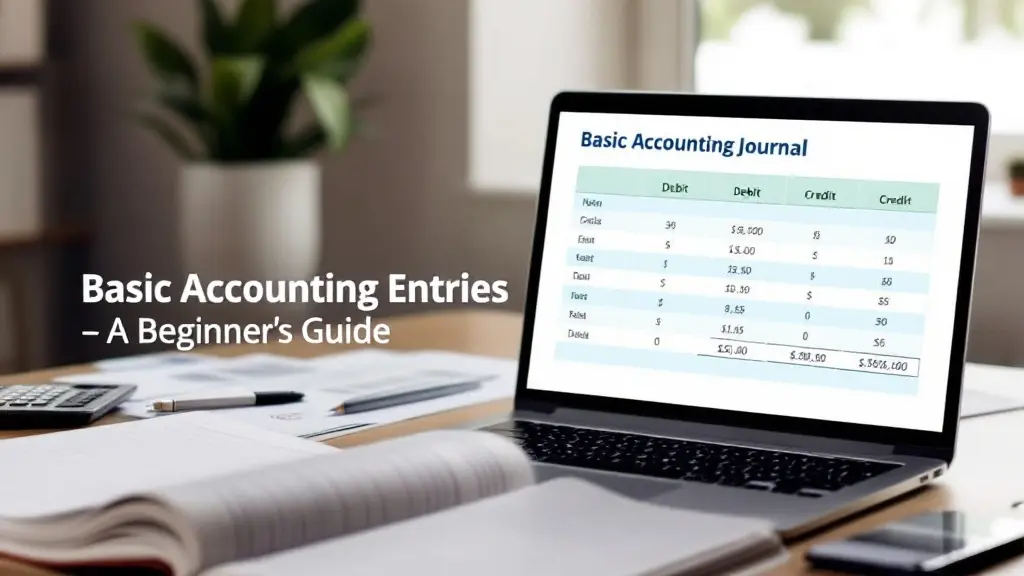The Accounting Process: A Complete Guide to Understanding the Fundamentals
Table of Contents
Most Read
[fusion_dropcap class="fusion-content-tb-dropcap"]I[/fusion_dropcap]ntroduction
Accounting is often referred to as the “language of business.” It helps businesses track their financial performance, comply with regulations, and make informed decisions. Whether you’re a student starting to learn about accounting or a business owner looking to improve your understanding of financial processes, this blog post will break down the accounting process in simple terms.
In this guide, we’ll walk you through the accounting process, explaining each step in detail, from identifying financial transactions to preparing financial statements. We’ll also discuss the key principles of accounting and how they contribute to the overall process.
Let’s dive into the world of accounting!
What is the Accounting Process?
The accounting process refers to the series of steps that accountants follow to record, process, and report a company’s financial transactions. This process ensures that financial data is accurately captured, organized, and presented in a way that is useful for decision-making. The goal of the accounting process is to provide clear, reliable financial information to stakeholders like business owners, managers, investors, and regulatory bodies.
The key components of the accounting process include:
- Identifying Transactions
- Recording Transactions
- Classifying Transactions
- Summarizing Transactions
- Preparing Financial Statements
- Interpreting Financial Data
- Auditing and Compliance
Step 1: Identifying Transactions
The first step in the accounting process is identifying financial transactions. These are events that affect the company’s financial position, such as a sale, purchase, investment, loan, or payment of expenses.
Examples of financial transactions include:
- A customer purchases products or services.
- The company makes a payment for rent or utilities.
- The business receives a loan from a bank.
Once a financial event occurs, it must be recorded in the accounting system to ensure that the company’s financial records remain accurate.
Step 2: Recording Transactions
After identifying the transaction, the next step is to record it in the company’s accounting books. This is done using journals, which serve as the initial record of all financial transactions. Each transaction is recorded as a journal entry, which includes:
- Date of the transaction
- Accounts affected (e.g., cash, sales, accounts payable)
- Amount of the transaction
- Description of the transaction
The journal entries are based on the double-entry bookkeeping system, meaning every transaction must have a debit and a credit. This ensures that the accounting equation (Assets = Liabilities + Equity) always remains balanced.
For example:
- When a business makes a sale, the sales account will be credited, and the cash or accounts receivable account will be debited.
Step 3: Classifying Transactions
Once the transactions are recorded, they must be classified into different categories or accounts. This is done in the general ledger. The general ledger is a complete record of all financial transactions in the company, organized by account.
Key categories in the general ledger include:
- Assets: Things the business owns (e.g., cash, equipment, inventory).
- Liabilities: What the business owes (e.g., loans, accounts payable).
- Equity: The owner’s interest in the company (e.g., capital, retained earnings).
- Revenue: Money earned from business activities (e.g., sales, service income).
- Expenses: Money spent to operate the business (e.g., salaries, rent, utilities).
Classifying transactions into these categories helps organize the company’s financial data, making it easier to generate reports and analyze performance.
Step 4: Summarizing Transactions
After classifying the transactions, accountants summarize them to create financial reports. This step involves preparing trial balances, which are preliminary financial statements that ensure that the books are balanced.
A trial balance lists all the accounts in the general ledger and their balances. The total of all the debits should equal the total of all the credits. If they don’t match, it means there’s an error somewhere in the records that needs to be corrected.
Once the trial balance is balanced, accountants prepare the adjusting entries. These are necessary to account for transactions that haven’t been recorded, such as accrued expenses or revenue.
Step 5: Preparing Financial Statements
Once the transactions are summarized and adjusted, the next step is to prepare the financial statements. These statements are used to communicate the financial health of the business to external stakeholders like investors, lenders, and regulators.
The four key financial statements are:
- Income Statement: Also known as the Profit & Loss Statement, it shows the company’s revenues and expenses over a specific period, highlighting the net income or loss.
- Balance Sheet: This snapshot of the company’s financial position lists its assets, liabilities, and equity at a specific point in time.
- Cash Flow Statement: This report shows the inflows and outflows of cash over a period, categorized into operating, investing, and financing activities.
- Statement of Changes in Equity: This statement shows how the company’s equity has changed during the period, including profits, dividends, and other adjustments.
Step 6: Interpreting Financial Data
Once the financial statements are prepared, the next step is interpreting the data. This involves analyzing the numbers to make informed decisions. Key financial ratios and metrics, such as the current ratio, return on equity (ROE), and gross margin, can provide insights into the company’s performance.
Interpretation of financial data helps stakeholders make decisions like:
- Whether the company is profitable.
- Whether the company has enough cash to pay its liabilities.
- How efficient the company is in generating revenue.
Step 7: Auditing and Compliance
Finally, the accounting process may involve auditing to ensure the accuracy of financial data. Auditors review the company’s financial statements, accounting practices, and internal controls to verify that everything complies with legal and regulatory requirements.
Auditing helps maintain the credibility of the financial statements and ensures transparency, which is critical for businesses, especially those with shareholders or those that are publicly traded.
Conclusion
The accounting process is a systematic approach to managing a company’s financial transactions. Each step, from identifying and recording transactions to preparing financial statements and interpreting data, plays a crucial role in maintaining the integrity of financial reporting.
Whether you’re running a small business or managing a large corporation, understanding the accounting process is essential for making informed financial decisions, ensuring compliance, and achieving long-term business success.
By following these steps and adhering to accounting principles, you can ensure that your business maintains accurate financial records, fosters trust with stakeholders, and lays the groundwork for future growth.
Visit Our Website : Accounting24.in









